
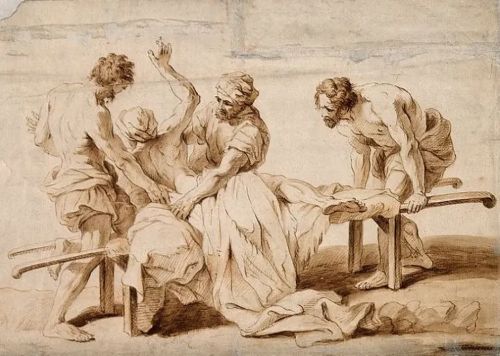
Social responses to disability were heavily influenced by the ideal of physical perfection.

By Matthew A. McIntosh
Public Historian
Brewminate
Introduction
The experience and understanding of disability in the ancient world reflect complex cultural, social, and medical attitudes that varied across time and geography. Far from being a marginal issue, disability in antiquity touched upon critical themes such as citizenship, social inclusion, medical practice, and religious beliefs. Ancient societies exhibited a range of responses—from stigmatization and exclusion to accommodation and even reverence—highlighting a nuanced spectrum of disability experiences. This essay examines the manifestations, perceptions, and treatments of disability in ancient Greece, Rome, and Egypt, providing insight into how disability was understood and integrated into ancient life.
Conceptualizing Disability in Antiquity
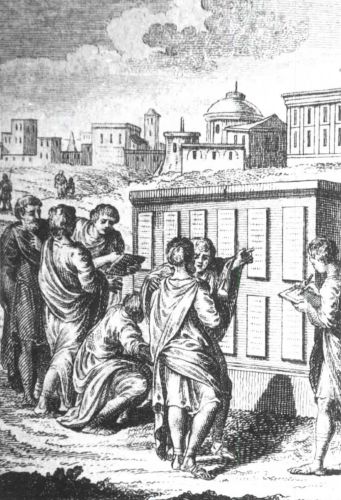
In the ancient world, disability was not merely a physical or medical condition but a deeply embedded social construct shaped by religious, philosophical, and legal frameworks. Ancient societies such as Greece and Rome did not possess a unified concept of “disability” as understood in modern biomedical or social models; instead, bodily and mental impairments were interpreted through a spectrum of cultural values including utility, aesthetics, morality, and divine favor. For instance, in early Greek thought, especially within Homeric literature, physical wholeness and beauty were closely tied to excellence (aretē) and nobility, while deviations from normative bodily ideals were often linked with moral or spiritual deficiency.¹ The blind prophet Tiresias is one notable exception, embodying both wisdom and impairment, suggesting a tension between disability and insight that complicates simplistic associations between bodily defect and social marginality.²
Greek philosophical traditions further shaped the conceptualization of disability, particularly in the works of Plato and Aristotle. Plato’s Republic notably advocates for the exclusion of individuals deemed physically or mentally defective from the ideal polis, implying that disability disrupts social harmony and civic perfection.³ Aristotle, too, characterized disability in functionalist terms, framing it as a deviation from the natural purpose or telos of the human body.⁴ These views had significant implications: they not only marginalized disabled persons within political theory but also justified practices such as infanticide, particularly in Sparta where the exposure of infants with visible impairments was state-sanctioned.⁵ Disability, then, became both a philosophical problem and a mechanism for delineating the boundaries of citizenship and human worth in the classical world.
Roman society inherited many of these Greek notions but incorporated them into a more pragmatic and legalistic worldview. Roman law, for example, developed complex categories for different kinds of impairments, especially regarding legal competence and guardianship.⁶ While Romans could sometimes valorize disabled figures—such as the general Marcus Sergius, who continued to serve heroically despite losing his right hand—disability was generally seen as a mark of weakness or unfitness for civic life.⁷ Nevertheless, the Roman system also allowed for forms of accommodation and integration. Prosthetics, public roles for disabled veterans, and even comedic representations of disability on stage point to a more varied set of experiences than one of outright exclusion.⁸ Importantly, Roman society did not uniformly stigmatize disability; responses were often contingent on class, gender, and military service.
Religious frameworks in antiquity, especially within Judeo-Christian and Greco-Roman traditions, also profoundly influenced the perception of disability. In ancient Hebrew texts, disability was sometimes construed as punishment for sin or moral failing, yet figures such as Moses—who is described as slow of speech—were chosen for divine missions, challenging prevailing assumptions.⁹ In early Christianity, disability was reimagined through the lens of suffering and redemption. Jesus’s miracles of healing were not merely medical interventions but symbolic reversals of social exclusion, positioning disabled persons as sites of divine grace rather than mere objects of pity.¹⁰ However, these narratives also reinforced the notion that disability was a condition to be cured, which could inadvertently sustain stigmatizing attitudes.¹¹ Thus, religious discourse in antiquity played an ambivalent role: offering both inclusion and marginalization.
Conceptualizations of disability in antiquity were multifaceted and dynamic, reflecting broader cultural values related to beauty, morality, utility, and the divine. While philosophical and legal systems often excluded or devalued disabled individuals, there were also moments of reverence, accommodation, and complexity that resist monolithic interpretations. Recent scholarship has emphasized the need to interrogate these ancient frameworks critically, not to impose modern categories retroactively, but to appreciate the historically contingent ways in which human variation was understood.¹² Disability in antiquity was not a fixed identity but a fluid status shaped by intersecting discourses—one that reveals as much about ancient societies’ ideals and anxieties as it does about the bodies they sought to control and define.
Disability and Social Status
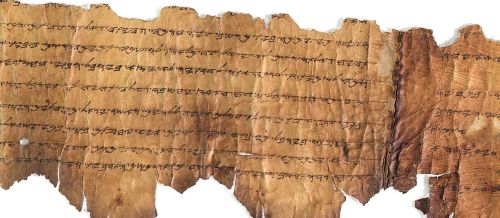
Social status played a critical role in shaping the lived experience of individuals with disabilities in antiquity. Unlike modern frameworks that promote a degree of formal equality under the law, ancient societies structured identity through rigid hierarchies based on gender, class, citizenship, and occupation. Disability did not function as a uniform identity across these strata. An elite Roman senator who acquired a physical impairment, for instance, could retain his status and influence through patronage networks and legal privileges, whereas an enslaved person with a similar condition might be deemed disposable.¹³ In fact, slaves with visible impairments were often used for entertainment or labor suited to their perceived limitations, and their disabilities became commodified aspects of their market value.¹⁴ Thus, the implications of disability were always filtered through one’s position in the social hierarchy, with the upper classes afforded more agency and respect despite bodily impairments.
Evidence from ancient Greece illustrates how disability intersected with civic participation and public honor. In classical Athens, full citizenship was predicated on one’s ability to participate in public life—through military service, speech in the assembly, or service in the courts. Disabled citizens were sometimes granted state-funded pensions (tele) if their impairments prevented them from working, a form of social support that suggests both marginalization and recognition.¹⁵ However, these pensions were modest and often required petitioners to publicly display their disability, a practice that could reinforce social stigma. In the democratic ideology of Athens, ability was tied to one’s usefulness to the polis, and disability, unless mitigated by wealth or reputation, could signal diminished civic worth.¹⁶ The state’s ambivalent policies reflect a broader tension: while recognizing physical impairment as a basis for assistance, they simultaneously constructed disability as a social deficiency.
In the Roman world, legal and familial structures often determined the degree to which disabled individuals could exercise authority or autonomy. Roman patriarchy was rooted in the concept of patria potestas, or paternal power, and men with disabilities who could no longer fulfill their roles as household heads faced symbolic and practical diminishment.¹⁷ However, certain forms of disability could be reconciled with masculinity if accompanied by military valor. The story of Marcus Sergius, a general who lost a hand in battle and continued to fight with an iron prosthesis, exemplifies how martial achievement could transcend physical impairment.¹⁸ Roman law further distinguished between different types of disability, such as blindness or muteness, to determine one’s legal capacity to testify, inherit, or adopt.¹⁹ These legal distinctions show that social status and legal identity were tightly interwoven with bodily integrity, and that some forms of disability could be partially neutralized by wealth, lineage, or heroic biography.
Religious roles and institutions also mediated the relationship between disability and status. In ancient Mesopotamia, individuals with congenital or acquired impairments could sometimes serve in temples as diviners or musicians, reflecting an ambivalent but not wholly negative valuation.²⁰ In contrast, Levitical codes in ancient Israel prohibited priests with visible disabilities from offering sacrifices, suggesting that physical integrity was equated with ritual purity.²¹ Early Christianity began to challenge this model by emphasizing spiritual over physical wholeness, but social hierarchies persisted. Church fathers often spiritualized physical impairments, praising them as signs of humility or divine testing, yet ecclesiastical offices remained largely reserved for the able-bodied.²² Thus, even within religious frameworks that elevated the disabled as symbols of piety, institutional barriers continued to delimit their authority and access to leadership roles.
The intersection of disability and social status in antiquity reveals a complex spectrum of inclusion, exclusion, and conditional acceptance. While impairments could signal weakness or divine disfavor, they could also become sources of symbolic power if framed appropriately—particularly for elites, veterans, or religious figures. What unified ancient responses was not a coherent disability policy, but a broader social logic that evaluated bodies based on their capacity to perform culturally valorized roles.²³ Whether in courtrooms, temples, homes, or theaters, disability was never interpreted in isolation but always through the prism of status. The ancient world thus offers a valuable, if sobering, reminder of how profoundly social structures shape perceptions of bodily difference—and how unevenly dignity and inclusion have been distributed across time.
Medical Treatment and Healing
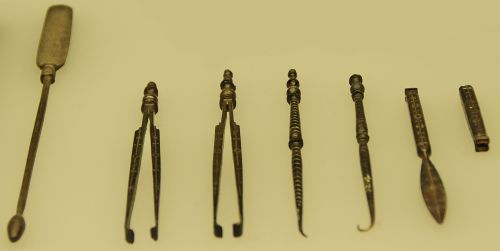
Medical approaches to disability in antiquity were deeply entwined with prevailing cosmological, humoral, and religious understandings of the body. The concept of disability was not categorized as a discrete medical issue but as one manifestation of broader physical or spiritual imbalance. In the Greco-Roman world, Hippocratic and Galenic medicine dominated elite thought, emphasizing the theory of the four humors—blood, phlegm, black bile, and yellow bile—as the basis for diagnosing all physical conditions.⁴² Disabilities, whether congenital or acquired, were frequently interpreted as chronic imbalances in these humors, treatable to varying degrees through dietary regulation, purging, cupping, and exercise.²⁴ While some conditions, such as lameness or blindness, were often considered permanent and beyond medical correction, physicians still prescribed regimens that might mitigate their effects or prevent further deterioration.²⁵ Medical practitioners, especially those operating in urban centers like Alexandria or Pergamon, sometimes recorded detailed case histories that reveal a proto-clinical understanding of impairment, though always framed within the limits of pre-modern anatomical knowledge.
Surgical treatment for disabling conditions was limited but not absent. Physicians and specialists such as iatroi and chirurgi practiced various forms of invasive treatment, including trepanation, the setting of fractures, and rudimentary amputations.²⁶ However, surgical success varied significantly depending on access to skilled practitioners and clean conditions—luxuries often reserved for elites. Texts like those of Celsus and Galen describe procedures for dealing with joint dislocations, spinal deformities, and even facial reconstruction, but most of these operations were high-risk and accompanied by long convalescence.²⁷ Roman military medicine offered some of the most advanced practical responses to physical trauma, driven by the logistical necessity of returning soldiers to the field or accommodating them in veteran colonies.²⁸ In these contexts, prosthetic devices such as iron hands and wooden limbs were developed, suggesting a pragmatic rather than curative approach to certain impairments.
Religious healing constituted another prominent avenue for addressing disability in antiquity, particularly among those excluded from elite medical care. Healing cults, especially those associated with Asclepius in the Greco-Roman world, attracted vast numbers of supplicants seeking relief from chronic illness and disability.²⁹ At sanctuaries like Epidaurus, ritual purification, dream incubation (enkoimesis), and the offering of votive objects (often body parts in clay or bronze) were common elements of the healing process.³⁰ While some individuals reported miraculous recoveries—narrated in inscribed testimonies—others may have received palliative treatments such as massages, herbal remedies, or hydrotherapy while awaiting divine intervention.³¹ These sanctuaries blurred the line between medicine and religion, reflecting the holistic nature of healing in antiquity, where physical restoration was closely linked with spiritual and moral renewal.
Outside the Greco-Roman sphere, Mesopotamian and Egyptian traditions also offer insights into how disability was treated and understood. In ancient Mesopotamia, illness and deformity were frequently attributed to supernatural causes, including demonic possession or divine wrath.³² Healing was thus both a magical and medical endeavor, involving incantations, exorcisms, and materia medica recorded in cuneiform tablets. Egyptian medicine, preserved in texts like the Edwin Smith and Ebers papyri, combined anatomical observations with spells and herbal prescriptions.³³ Some of these texts provide instructions for treating injuries that could result in long-term disability—such as spinal trauma or head wounds—with remarkable empirical detail.³⁴ Nonetheless, treatment outcomes were highly variable, and the societal capacity to reintegrate disabled persons after injury or illness remained limited, especially among lower social classes.
Medical treatment and healing practices for disabilities in antiquity reflected the diverse and stratified nature of ancient societies. While elite patients had access to trained physicians and sophisticated therapies grounded in empirical observation, the majority relied on religious healing, folk remedies, and community care. Disabilities were treated not solely as physical pathologies but as existential conditions shaped by cosmic, moral, and spiritual forces.³⁵ This syncretism of medicine and metaphysics framed healing as both a physical and social process—one that sought not merely to repair the body, but to restore harmony between the individual and their world. Despite limited technological capabilities, ancient healing systems provided varied frameworks through which disability was experienced, treated, and occasionally transcended.
Disability in Religion and Mythology
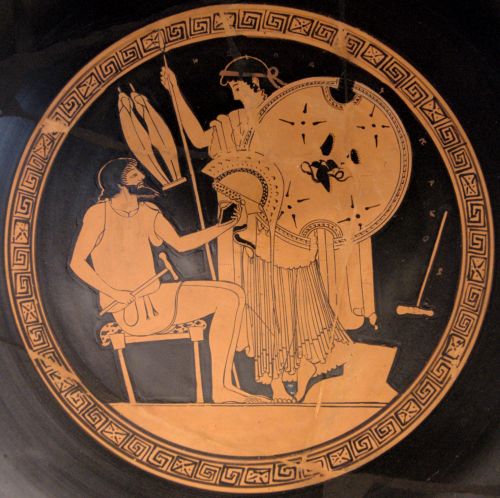
Disability occupied a complex and often contradictory space within the religious and mythological frameworks of antiquity. In many traditions, physical impairments were simultaneously signs of divine punishment, symbols of moral or spiritual deficiency, and paradoxically, indicators of divine favor or wisdom. In Greco-Roman mythology, gods and heroes with disabilities were rare but significant. The most prominent example is the god Hephaestus (Roman Vulcan), who was physically impaired from birth or due to being cast from Olympus, depending on the version.³⁶ Despite his disability, Hephaestus was the divine craftsman, credited with forging the weapons of the gods and creating automatons—demonstrating exceptional skill and intellect. His limp, far from being an impediment to divine utility, became a distinguishing trait that paradoxically emphasized both his exclusion from and essential role within the divine order.³⁷ This ambiguous portrayal illustrates how mythological disability could mark a being as both liminal and powerful.
Religious texts and rituals across cultures often treated disability as a signifier of ritual impurity or divine judgment. In ancient Israelite religion, Levitical law explicitly restricted individuals with visible impairments from serving as priests or approaching the sanctuary, emphasizing the requirement for bodily perfection in ritual leadership.³⁸ The logic behind this exclusion was not necessarily moral condemnation but a symbolic alignment between physical wholeness and spiritual purity. Yet, this exclusion also reinforced social hierarchies and marginalized disabled individuals from central religious roles. However, prophets and other divinely chosen figures sometimes exhibited disabilities or speech impairments—Moses, for example, is described as having a speech impediment, yet he becomes the quintessential leader and prophet.³⁹ This suggests a narrative strategy that highlights divine power manifesting through human weakness, a theme later echoed in early Christian thought.
Christianity, especially in its formative centuries, introduced new theological interpretations of disability that reoriented previous models. Jesus’ frequent healing of the blind, lame, and deaf in the Gospels reflects both a theological emphasis on restoration and a symbolic validation of marginalized bodies.⁴⁰ These miracles were not merely acts of compassion but declarations of messianic authority, underscoring the idea that spiritual salvation was accessible to all, regardless of physical state. At the same time, early Christian communities often spiritualized disability, viewing it as a form of divine testing or a means of cultivating humility. Paul’s reference to his “thorn in the flesh” has been widely interpreted by scholars as a metaphor for a chronic physical ailment that remained unresolved, serving as a conduit for divine grace.⁴¹ In this theological framework, disability was not erased or necessarily healed but reframed as a site of spiritual strength and existential significance.
Disability in ancient religious narratives also served as a mechanism for explaining cosmic or moral order. In Mesopotamian myths, bodily impairments were often attributed to curses or the actions of angry deities, but the afflicted could also serve as ritual specialists or interpreters of divine will.⁴² Similarly, in Egyptian mythology, the god Horus loses an eye in his battle with Set, and its restoration by Thoth becomes a symbol of healing and cosmic balance.⁴³ Such myths constructed disability not merely as a loss but as part of a cyclical process of injury and restoration, disorder and reconciliation. These narratives emphasized the integration of imperfection into the broader cosmic scheme, offering a theological rationale for suffering and impairment. As such, religious and mythological stories often encoded cultural attitudes toward disability, portraying it as an essential part of the human-divine interface rather than a mere biological deficit. Disability in the religious and mythological landscape of antiquity was not monolithic but multifaceted, reflecting the theological, social, and symbolic concerns of different cultures. While impairments could exclude individuals from sacred roles or be seen as manifestations of sin, they could also confer unique authority, spiritual insight, or divine favor. The tension between disability as curse and disability as calling pervades ancient religious literature, highlighting how bodily difference was embedded in broader metaphysical systems.⁴⁴ These systems simultaneously constrained and empowered disabled individuals, offering a mirror through which ancient societies conceptualized purity, power, and divine-human relations. The study of disability in religion and mythology thus reveals not only ancient responses to physical difference but also the enduring human effort to interpret suffering and embodiment within a spiritual cosmos.
Conclusion
Disability in the ancient world was a multifaceted phenomenon shaped by cultural ideals, social structures, medical knowledge, and religious beliefs. While physical and mental impairments could result in exclusion and hardship, they also prompted accommodation, reverence, and medical innovation. Understanding ancient disability reveals much about how these societies valued human bodies and capacities, and how difference was negotiated within communal life. Far from a simple narrative of marginalization, disability in antiquity represents a rich field for exploring the intersections of health, identity, and society.
Appendix
Endnotes
- Martha L. Rose, The Staff of Oedipus: Transforming Disability in Ancient Greece (Ann Arbor: University of Michigan Press, 2003), 15.
- Ibid., 38–40.
- Plato, Republic, trans. G.M.A. Grube (Indianapolis: Hackett Publishing, 1992), 460c–e.
- Aristotle, Politics, trans. Benjamin Jowett (New York: Modern Library, 2001), 1335b–1336a.
- Sarah B. Pomeroy, Spartan Women (New York: Oxford University Press, 2002), 26.
- Elizabeth Rawson, “Discriptae Corpora: Conceptualizing Physical Deformity in Roman Law and Literature,” Classical Journal 91, no. 2 (1995): 117–36.
- Pliny the Elder, Natural History, Book VII, trans. H. Rackham (Cambridge: Harvard University Press, 1952), 120–22.
- Jane Draycott, Prosthetics and Assistive Technology in Ancient Greece and Rome (Cambridge: Cambridge University Press, 2022), 55–67.
- Saul M. Olyan, Disability in the Hebrew Bible: Interpreting Mental and Physical Differences (Cambridge: Cambridge University Press, 2008), 31–34.
- Candida R. Moss, Divine Healing: The Role of Disability in Early Christian Miracle Accounts (New Haven: Yale University Press, 2012), 87–105.
- Deborah Beth Creamer, Disability and Christian Theology: Embodied Limits and Constructive Possibilities (Oxford: Oxford University Press, 2009), 45.
- Christian Laes, Disability in Antiquity (London: Routledge, 2016), 4–5.
- Laes, 132–34.
- Deborah Kamen, Status in Classical Athens (Princeton: Princeton University Press, 2013), 88–90.
- Matthew Dillon and Lynda Garland, Ancient Rome: From the Early Republic to the Assassination of Julius Caesar (London: Routledge, 2015), 259.
- Martha L. Rose, The Staff of Oedipus: Transforming Disability in Ancient Greece (Ann Arbor: University of Michigan Press, 2003), 73–76.
- Jane Gardner, Family and Familia in Roman Law and Life (Oxford: Clarendon Press, 1998), 49–52.
- Pliny the Elder, Natural History, 7.28.
- Elizabeth Rawson, 125.
- JoAnn Scurlock and Burton R. Andersen, Diagnoses in Assyrian and Babylonian Medicine (Urbana: University of Illinois Press, 2005), 144–45.
- Olyan, 48–50.
- Moss, 120–23.
- Laes, Disability in Antiquity, 201.
- Vivian Nutton, Ancient Medicine, 2nd ed. (London: Routledge, 2013), 111–13.
- Rebecca Flemming, “The Invention of Mutilation in the Ancient World,” Medical History 56, no. 3 (2012): 327–30.
- Lawrence Bliquez, “The Tools of Asclepius: Surgical Instruments in Greek and Roman Times,” Archaeology 50, no. 6 (1997): 42–48.
- Galen, On the Method of Healing, trans. Ian Johnston (Cambridge: Harvard University Press, 2011), 154–62.
- Patricia Southern, The Roman Army: A Social and Institutional History (Oxford: Oxford University Press, 2006), 221–24.
- Emma J. Edelstein and Ludwig Edelstein, Asclepius: A Collection and Interpretation of the Testimonies, vol. 2 (Baltimore: Johns Hopkins University Press, 1998), 162–65.
- Louise Cilliers and François P. Retief, “Asclepius and Ancient Greek Medicine,” Acta Theologica Supplementum 7 (2005): 1–10.
- Aline Rousselle, Porneia: On Desire and the Body in Antiquity (Oxford: Blackwell, 1988), 47.
- JoAnn Scurlock, Magico-Medical Means of Treating Ghost-Induced Illnesses in Ancient Mesopotamia (Leiden: Brill, 2005), 98–103.
- John F. Nunn, Ancient Egyptian Medicine (Norman: University of Oklahoma Press, 1996), 78–83.
- Edwin Smith Surgical Papyrus, trans. James Henry Breasted (Chicago: University of Chicago Press, 1930), Case 48.
- Nutton, Ancient Medicine, 207.
- Jenny Strauss Clay, Hephaestus and Being a God (Cambridge: Harvard University Press, 1992), 15–18.
- Adrienne Mayor, Gods and Robots: Myths, Machines, and Ancient Dreams of Technology (Princeton: Princeton University Press, 2018), 44–46.
- Olyan, 41–43.
- Exodus 4:10–12, Holy Bible, New Revised Standard Version.
- Moss, 17–22.
- 2 Corinthians 12:7–9, Holy Bible, New Revised Standard Version.
- Scurlock, 152–54.
- Geraldine Pinch, Egyptian Myth: A Very Short Introduction (Oxford: Oxford University Press, 2004), 75–76.
- Rose, 121–23.
Bibliography
- Aristotle. Politics. Translated by Benjamin Jowett. New York: Modern Library, 2001.
- Bliquez, Lawrence. “The Tools of Asclepius: Surgical Instruments in Greek and Roman Times.” Archaeology 50, no. 6 (1997): 42–48.
- Cilliers, Louise, and François P. Retief. “Asclepius and Ancient Greek Medicine.” Acta Theologica Supplementum 7 (2005): 1–10.
- Clay, Jenny Strauss. Hephaestus and Being a God. Cambridge: Harvard University Press, 1992.
- Creamer, Deborah Beth. Disability and Christian Theology: Embodied Limits and Constructive Possibilities. Oxford: Oxford University Press, 2009.
- Dillon, Matthew, and Lynda Garland. Ancient Rome: From the Early Republic to the Assassination of Julius Caesar. London: Routledge, 2015.
- Draycott, Jane. Prosthetics and Assistive Technology in Ancient Greece and Rome. Cambridge: Cambridge University Press, 2022.
- Edelstein, Emma J., and Ludwig Edelstein. Asclepius: A Collection and Interpretation of the Testimonies. Vol. 2. Baltimore: Johns Hopkins University Press, 1998.
- Flemming, Rebecca. “The Invention of Mutilation in the Ancient World.” Medical History 56, no. 3 (2012): 325–348.
- Galen. On the Method of Healing. Translated by Ian Johnston. Cambridge: Harvard University Press, 2011.
- Gardner, Jane. Family and Familia in Roman Law and Life. Oxford: Clarendon Press, 1998.
- Holy Bible, New Revised Standard Version.
- Kamen, Deborah. Status in Classical Athens. Princeton: Princeton University Press, 2013.
- Laes, Christian. Disability in Antiquity. London: Routledge, 2016.
- Mayor, Adrienne. Gods and Robots: Myths, Machines, and Ancient Dreams of Technology. Princeton: Princeton University Press, 2018.
- Moss, Candida R. Divine Healing: The Role of Disability in Early Christian Miracle Accounts. New Haven: Yale University Press, 2012.
- Nunn, John F. Ancient Egyptian Medicine. Norman: University of Oklahoma Press, 1996.
- Nutton, Vivian. Ancient Medicine. 2nd ed. London: Routledge, 2013.
- Olyan, Saul M. Disability in the Hebrew Bible: Interpreting Mental and Physical Differences. Cambridge: Cambridge University Press, 2008.
- Pinch, Geraldine. Egyptian Myth: A Very Short Introduction. Oxford: Oxford University Press, 2004.
- Plato. Republic. Translated by G.M.A. Grube. Indianapolis: Hackett Publishing, 1992.
- Pliny the Elder. Natural History. Translated by H. Rackham. Cambridge: Harvard University Press, 1952.
- Pomeroy, Sarah B. Spartan Women. New York: Oxford University Press, 2002.
- Rawson, Elizabeth. “Discriptae Corpora: Conceptualizing Physical Deformity in Roman Law and Literature.” Classical Journal 91, no. 2 (1995): 117–136.
- Rose, Martha L. The Staff of Oedipus: Transforming Disability in Ancient Greece. Ann Arbor: University of Michigan Press, 2003.
- Rousselle, Aline. Porneia: On Desire and the Body in Antiquity. Oxford: Blackwell, 1988.
- Scurlock, JoAnn. Magico-Medical Means of Treating Ghost-Induced Illnesses in Ancient Mesopotamia. Leiden: Brill, 2005.
- Scurlock, JoAnn, and Burton R. Andersen. Diagnoses in Assyrian and Babylonian Medicine. Urbana: University of Illinois Press, 2005.
- Southern, Patricia. The Roman Army: A Social and Institutional History. Oxford: Oxford University Press, 2006. The Edwin Smith Surgical Papyrus. Translated by James Henry Breasted. Chicago: University of Chicago Press, 1930.
Originally published by Brewminate, 05.20.2025, under the terms of a Creative Commons Attribution-NonCommercial-NoDerivatives 4.0 International license.


